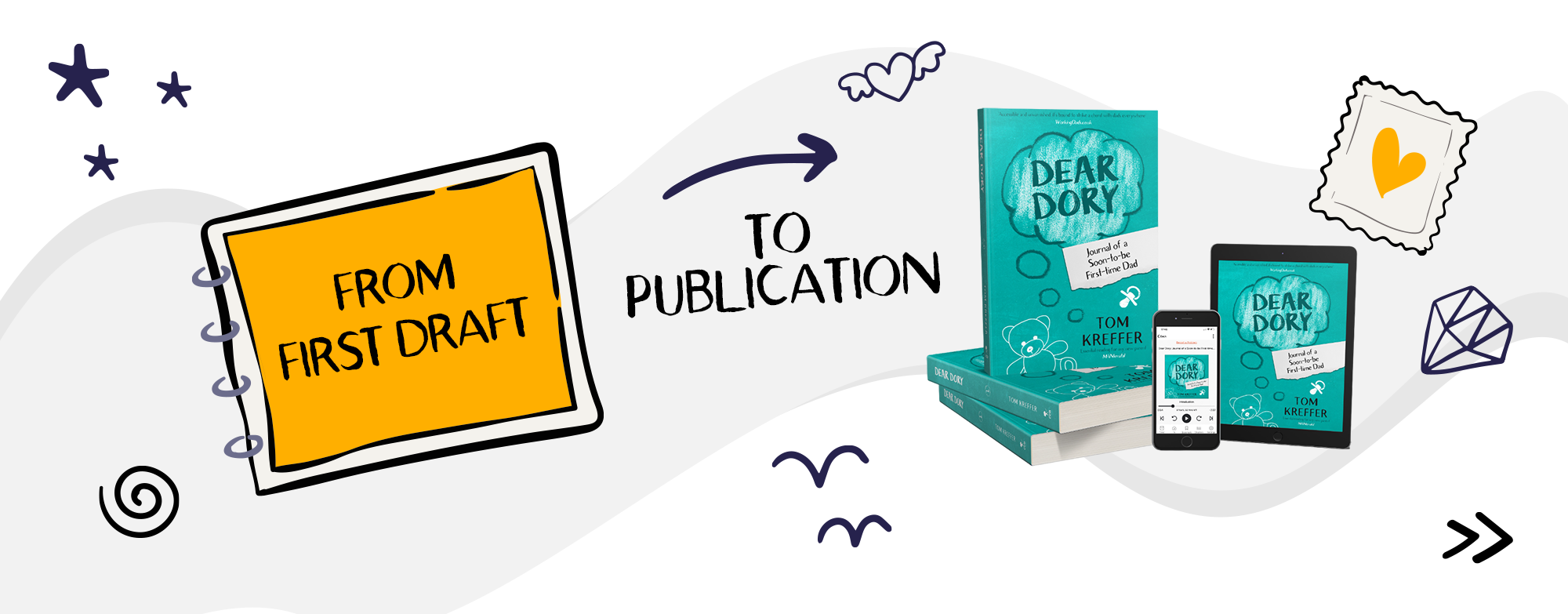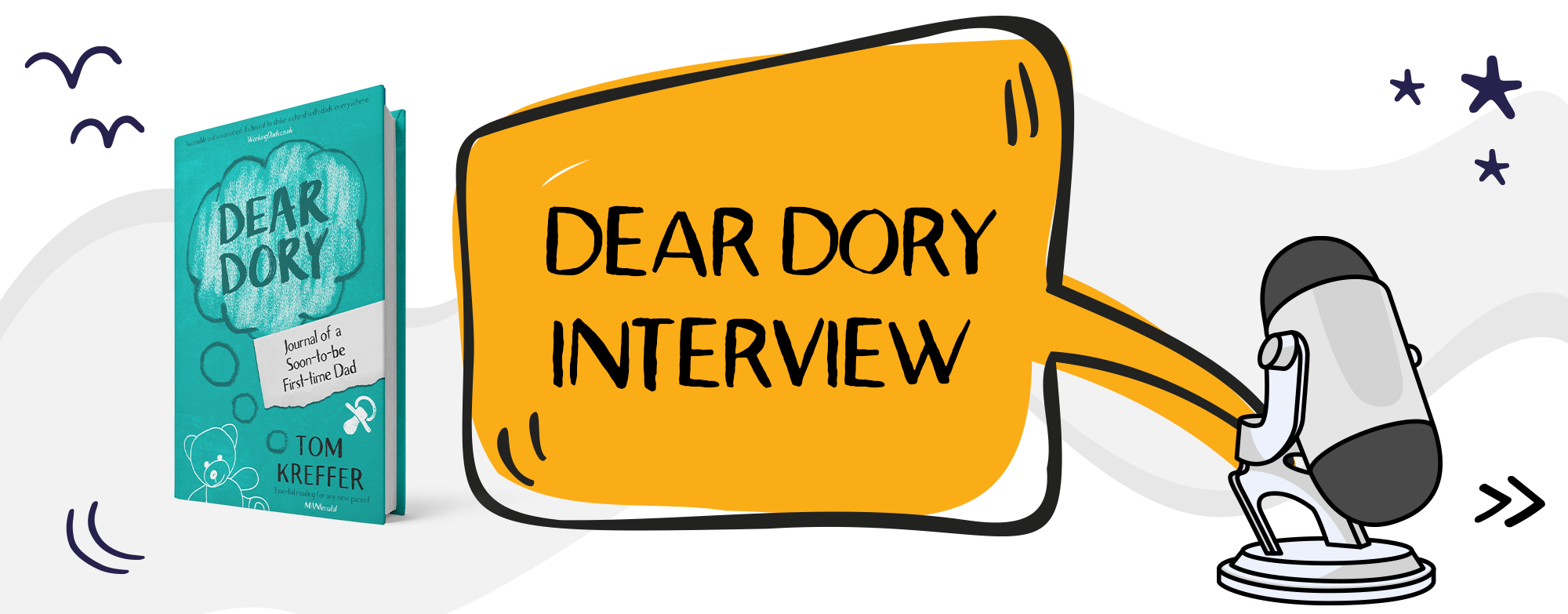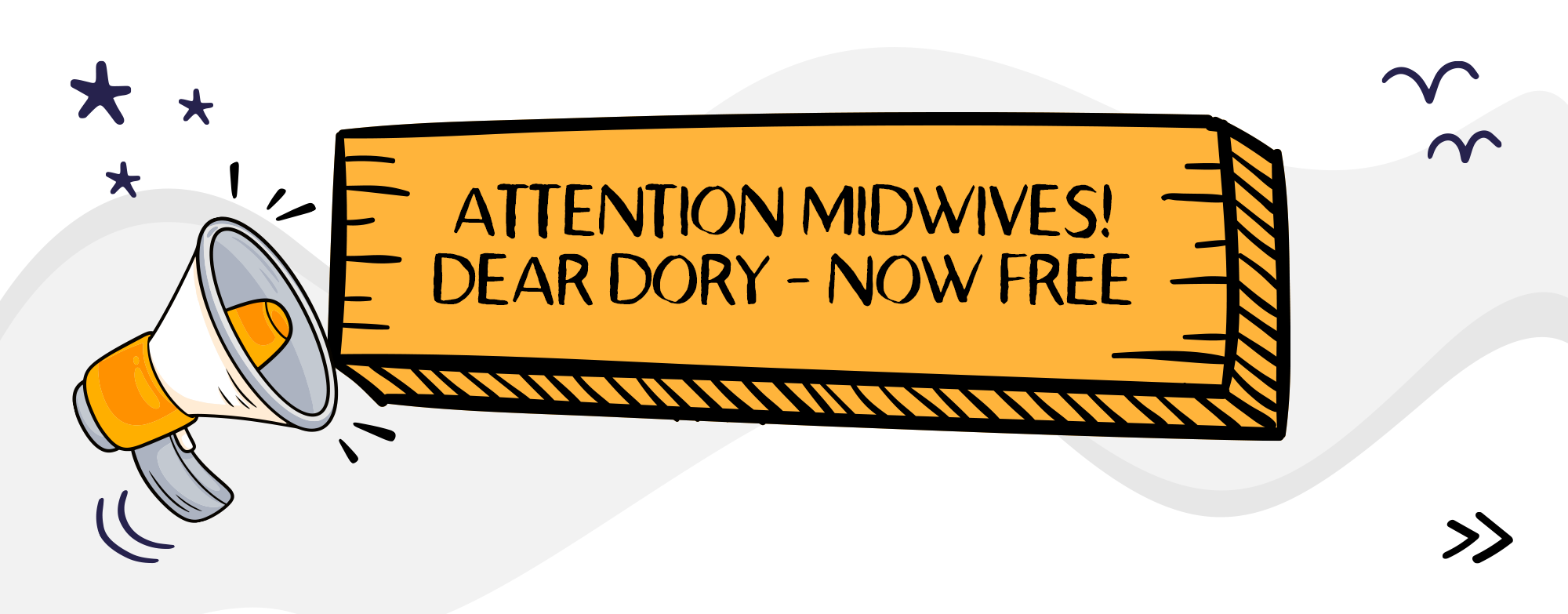Welcome to Part 5, the final post in the ‘Dear Dory Creative Process’ series. You can read Part 1, Part 2, Part 3 and Part 4 here.
I wanted to end this series by detailing the two biggest lessons I learnt from publishing my first book.
Lesson number one is:
Writing is essentially two full-time jobs
It takes a tremendous amount of effort to produce a book of high quality – and that’s just my personal contribution, without mentioning the work of editors and test readers.
But the writing is only half of the gig. The other half is marketing. And it takes more forms than I could possibly have expected: book covers, interior formatting, website, social media presence, email marketing and newsletters, press releases, reader reviews, editorial reviews, book promotions, networking, guest blog articles, book trailers, content marketing, podcast interviews, interaction with readers, working with businesses to create mutually beneficial partnerships.
I suspect there are a lot more areas I haven’t discovered or got round to tackling yet that should be included on this list.
Book covers
Let’s take one aspect of marketing: cover design. I’ll give you an insight into the process with Dear Dory. First, I hired a creative agency. They sent me over two concepts. I wasn’t crazy about either of them, but with a tweak to one of the visions, we had something we could use as a foundation and build on.
Next, we went through several iterations, which included hiring a graphic designer to create some artwork. This took time and money. I was sent several different colour schemes for the cover, which I then sent to as many people as possible, asking them to vote for their favourite. I then selected the option that had the most votes.
Fortunately, there was a clear winner.
The whole process spanned weeks and involved hours of work from many different people. And that describes just one item on the long list of marketing areas that an author should be considering – especially a brand-new author whom no one has heard of.
Lesson number two is:
Listen to your gut
Sticking with the book cover, even after all of that work I hated it. Actually, I hated the e-book cover. The hardback and paperback versions looked OK, but overall I was never awed. I can’t explain why; something about it just never sat well with me. It was the same with the interior formatting (carried out by the same company). I just thought the book looked a bit cheap and amateurish – as if I had done it all myself.
I was disappointed, because I was reaching that milestone: the great moment in an author’s career when they get to hold a physical copy of their first book for the first time. But I allowed the design agency to override my gut instinct and talk me out of making any more changes – which was a big mistake.
The lesson I learnt is that I need to rely on my gut. It’s a bit like deciding what to do with test-reader feedback. I know that pleasing everyone is a pipe dream, and so I have to rely on my gut instinct to tell me which bits I need to rewrite, which bits I need to delete and which bits I need to leave well alone.
Even the Harry Potter series has its critics.
Ultimately, I get the final say on everything. It’s creatively liberating, but it’s also a lot of responsibility, and it’s mentally taxing and draining at times.
This is something I didn’t expect when writing my first book.
But every cloud …
After Dear Dory came out, I was able to network with other authors, and I joined a couple of fantastic Facebook groups. There, I was able to get recommendations for another design agency that I could work with.
The new agency designed a much better cover for my second book and redesigned Dear Dory, maintaining the original conceptual theme but improving on the quality and execution. It was a costly way to correct a mistake, but I was all too happy to pay the price. I love the new book covers, and I feel the branding is much better aligned to the type of books I write (in this series, at least).
It’s fair to say that I’ve spent most of 2021 either correcting mistakes I made or learning more about book marketing. But I’m OK with that. I’m happy that I’m learning and improving on aspects of being an author that aren’t just about the writing element, though that’s still my number one priority.
I’m optimistic about the future. I will continue to pour my soul into my book projects, making them the best they can be. There is nothing more rewarding than having a reader contact me and tell me how much fun they had reading Dear Dory or how impactful it was because they’re going through similar experiences.
The words of encouragement I get are fuel. They help me get up early in the morning and write, and they help me weather all my ignored emails pitching to bloggers and influencers. They help me maintain the highest standards. They keep me going.
I’ll end this series by saying thank you to all of you who have checked out Dear Dory or any of my other books, and to any future reader. I can’t tell you how much your support means to me.
And to every other writer out there in the universe, just keep swimming. Humanity craves stories, and there will always be a demand for them, so write them to the best of your ability and continue learning and honing your craft. Keep going!





